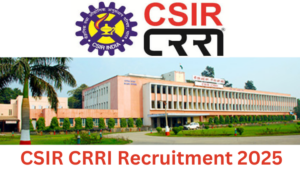Q1. Which of the following is the cellular respiratory centre?
(a) Nucleus
(b) Mitochondria
(c) Ribosome
(d) Golgi body
(e) None of the above
Q2. The water and mineral salts are transported to the various organs by which of the following?
(a) Xylem
(b) Phloem
(c) Cortex
(d) Cambium
(e) None of the above
Q3. The food material prepared in the plants is transported to the various organs by which of the following?
(a) Xylem
(b) Phloem
(c) Cortex
(d) Cambium
(e) None of the above
Q4. Very small insoluble particles in a liquid may be separated from it by using
(a) crystallization
(b) fractional distillation
(c) centrifugation
(d) decantation
(e) None of the above
Q5. Which one of the following elements cannot be detected by “Lassaigne’s test”?
(a) I
(b) CI
(c) S
(d) F
(e) None of the above
Q6. Which of the following organelles of a cell is involved in photosynthesis?
(a) Chloroplast
(b) Mitochondria
(c) Golgi bodies
(d) Endoplasmic reticulum
(e) None of the above
Q7. Molecules of which of the following has cage like structure?
1. Diamond
2. Graphite
3. Fullerenes
Select the correct answer using the code given below:
(a) 1, 2 and 3
(b) 2 and 3 only
(c) 2 only
(d) 3 only
(e) None of the above
Q8. The ultimate cause of water movement in a plant stem against gravity is
(a) Osmosis
(b) Photosynthesis
(c) Transpiration
(d) Diffusion
(e) None of the above
Q9. A seed is ripened:
(a) Ovary
(b) Flower
(c) Gynoecium
(d) Ovule
(e) None of the above
Q10. Which of the following plants produce only seeds but no fruit?
(a) Sugarcane
(b) Peanut
(c) Cycas
(d) Almond
(e) None of the above
Solutions
S1.Ans. (b)
Sol. The site of cellular respiration is mitochondrion as it involved in generation of energy, (ATP). Nucleus consists of genetic material which is transferred from one generation to another, ribosome helps in protein synthesis and Golgi apparatus helps in glycosylation.
S2.Ans. (a)
Sol. Xylem is responsible for transporting water and various mineral salts. Phloem is responsible for transportation of sucrose, cambium helps in secondary growth which gives rise to xylem and phloem and cortex is a ground tissue present in the plant organ, usually consisting of vascular bundles.
S3.Ans. (b)
Sol. The products of photosynthesis in green plants are made in leaves (mesophyll cells). Sugar molecules are synthesized, which are generally called as photosynthates. Phloem tissue carries these photosynthates to distant plant organs. Unlike conduction in xylem, the transport through phloem is multidirectional.
S4.Ans. (d)
Sol. Decantation is a process of separation of insoluble solids from liquid. The suspension of solid particles in liquid is allowed to stand for some time. The solid particles then settle down at the bottom of the container and clean water goes up.
S5.Ans. (d)
Sol. Fluorine does not give Lassaigne’s test because it does not form Precipitate like other halogens (chlorine,Bromine,Iodine).
S6.Ans. (a)
Sol. The actual site where photosynthesis occurs is the grana or thylakoid membranes of the chloroplast as the machinery for the process are embedded in the grana.Mitochondria are involved in the process of generation of energy, Golgi apparatus is involved in glycosylation and endoplasmic reticulum is involved in protein synthesis due to the presence of ribosome on the surface.
S7.Ans. (d)
Sol. Fullerene C60 is a polyhedral CARBON structure composed of around 60-80 carbon atoms in pentagon and hexagon configuration. They are named after Buckminster Fuller because of structural resemblance to geodesic domes. Fullerenes can be made in high temperature such as arc discharge in an inert atmosphere.
S8.Ans. (c)
Sol. The movement of water in plants is caused by transpiration, which involves the pulling of water due to cohesion-tension force or rather known as cohesion-tension theory. Osmosis is the process by which the solvent moves through a semi-permeable membrane from low concentration to high concentration.
S9.Ans. (d)
Sol. Botanically a fruit is a swollen and ripened ovary and the seeds are actually the fertilized ovules, inside which of the small embryos are nestled in.
S10.Ans. (c)
Sol. The production of naked seeds or ovules without fruits is one of the main characteristic features of Gymnosperms. Cycas sp. is a gymnosperm.



 GA Capsule for SBI Clerk Mains 2025, Dow...
GA Capsule for SBI Clerk Mains 2025, Dow...
 The Hindu Review October 2022: Download ...
The Hindu Review October 2022: Download ...
 Delhi CSIR CRRI Recruitment 2025 Notific...
Delhi CSIR CRRI Recruitment 2025 Notific...







